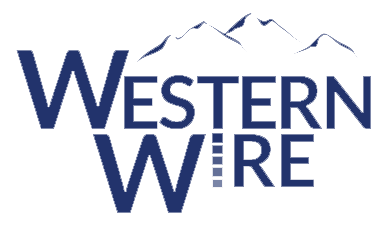The U.S. Environmental Protection Agency (EPA) may reconsider its controversial 2015 ozone standard, after years of defending against bipartisan disapproval from western officials.
Court documents obtained by Bloomberg Law show the EPA asking for more time in a lawsuit triggered by the 2015 ozone standard of 70 parts per billion (ppb), down from the prior benchmark of 75 ppb.
Oral arguments before a federal appeals court are scheduled for April 19 but EPA officials want a continuance “to give the appropriate officials adequate time to fully review” the agency’s ozone rule, set during the Obama administration.
“EPA intends to closely review the 2015 Rule, and the prior positions taken by the Agency with respect to the 2015 Rule may not necessarily reflect its ultimate conclusions after that review is complete,” Acting Assistant Attorney General Jeffrey Wood said in a court filing on behalf of the EPA.
The decision to tighten the standard from 75 ppb to 70 ppb drew bipartisan opposition from a broad coalition of stakeholders, including the U.S. Conference of Mayors and National Association of Counties.
Local officials argued for keeping the 75 ppb standard, set less than a decade ago, in place.
Tightening the standard any further would “negatively affect job creation and critical economic development projects,” including upgrades to transportation infrastructure, the mayors and county officials warned in comments to the EPA.
Since then, critics of the standard have continued to sound the alarm, including Colorado’s Democratic Gov. John Hickenlooper, who said “it would be a great idea if they suspended the standard.” In Congress, there is a bipartisan push to delay enforcement of 70 ppb standard and reform the way federal air quality limits – known as National Ambient Air Quality Standards – are set.
As things stand, at least 22 states will violate the 70 ppb standard, according to a Bloomberg survey of state regulators.
In the West, imported air pollution and other sources of “background” ozone make compliance with the 2015 standard practically impossible, according to Seyed Sadredin, executive director of the San Joaquin Valley Air Pollution Control District, which regulates air quality across eight counties in California’s Central Valley. “We could shut down all of our Valley businesses and we will not get enough reductions to meet the standard,” Sadredin said during a recent U.S. House hearing.
Ground-level ozone, sometimes called smog, is tough to regulate because almost every sector of the economy produces ozone-forming emissions.
Power plants, cars, trucks and factories produce these emissions, but there are background sources of ozone, too. Some of those sources are natural, like wildfires.
But an increasing problem in western states is ozone that blows into the region from other countries, like Mexico and China, according to the Western States Air Resources Council.
During the 2015 debate over the ozone standard, officials and experts in the West worried that background ozone levels would push them into long-term violation of federal law, which carries serious consequences.
Violation of the federal ozone standard forces state and local officials to crack down on sources of ozone-forming emissions, even if those sources are already tightly regulated. The EPA also has the final say over these new state and local requirements.
This means “EPA gets to regulate an enormous amount of economic activity,” Ray Gifford, former chairman of the Colorado Public Utilities Commission, warned during the 2015 ozone debate. “In effect, EPA becomes the planning commission, the zoning commission and the state permitting agency all rolled into one,” he said.
The Associated General Contractors of America has warned that long-term violation of the ozone standard means “essentially a ban on the construction of new industrial or manufacturing facilities in this area, and it becomes very difficult even to expand existing facilities.”
Critics of the Obama administration’s ozone standard say the new threshold ignores how much ozone levels have been reduced since the 1970s.
In Denver, for example, ozone concentrations in the early 1970s exceeded 300 ppb, according to state records, or about four times higher than today’s average. “In the past, there were cost-effective options to reduce emissions, and the ozone targets were reachable,” Gifford said. “Today, we have reached the point of diminishing returns.”
If the Trump administration decides to formally reconsider the 2015 ozone standard, it will be following a precedent set by the Obama EPA in 2009.
At first, the Obama administration wanted to quickly tighten the 75 ppb standard, set by the EPA under President George W. Bush.
But the Obama White House later changed course, delaying that effort until after the president was reelected to a second term.
Ultimately, however, the standard was tightened by the Obama EPA to 70 ppb in late 2015.
But the decision to tighten the standard came only a few months after the Obama EPA issued rules for complying with the 75 ppb benchmark, set in 2008.
This frustrated many state regulators who were still coming up with new rules and regulations at the local level to meet the 75 ppb standard.
Today, the EPA is setting new federal standards faster than they can provide guidance about how to meet those standards, which is “like giving someone a destination without a map,” Marc Cone, the air quality director of the Maine Department of Environmental Protection, said in recent testimony to Congress. “The system does not work and now is an excellent time to consider changes,” he said.
A coalition of groups – including Earthjustice, Sierra Club and the Natural Resources Defense Council (NRDC) – has vowed to fight the Trump administration’s request to delay oral arguments in the appeals court case over the ozone standard.
During the 2015 debate over the ozone standard, environmental groups wanted to drive it even lower, to 60 ppb.
“The Trump Administration is trying to take away Americans’ right to breathe clean air,” John Walke, Clear Air Director at NRDC, said in a statement. “This is dangerous and NRDC will do everything we can to stop it.”

